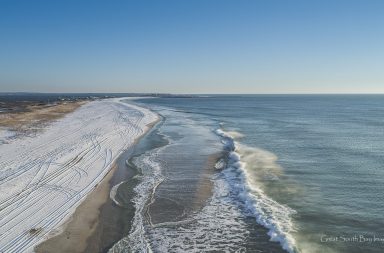At the age of six, my dad took me fishing for my very first time. Targeting winter flounder, we showed up at the Shinnecock Canal with a dozen blood worms and a bag of ribbed mussels. It did not take long before we were into fish. The action was fast and furious, and in a short time we were out of bait and had a cooler full of tasty winter flounder. It was that day when my “addiction” to fish began. I was hooked and later pursued a career in marine science.
Since that memorable day, the Shinnecock Canal has continued to be a magical place for me. It is where I observed my first tropical fish on Long Island, the banded rudderfish. I spotted not one, but two loggerhead sea turtles swim through just as the locks opened after a day of fluke fishing. On a frigid day in January, while fishing for herring, I witnessed my first wild seal. And on Monday November 14, 2016 I offered up another first.
Early that morning, my phone began to blow-up with texts and @ mentions on social media about a huge fish kill taking place in the canal. I raced down to the canal to witness something that in my 34 years of exploring the canal I have never seen, millions of dead and dying Atlantic menhaden (aka bunker). I have experienced fish kills in the past, but always during summer months and in areas where water quality was already comprised. This kill was different. Not only does cold water hold more oxygen, harmful algal blooms are not present this time of year. What caused their death? Millions of menhaden were chased into the canal overnight by hungry bluefish. As more and more fish were packed into this confined space, they quickly used up all the available oxygen and suffocated to death. At approximately 9:30 am, the locks opened with the change of the tide and flushed a majority of the dead fish into Shinnecock Bay.



